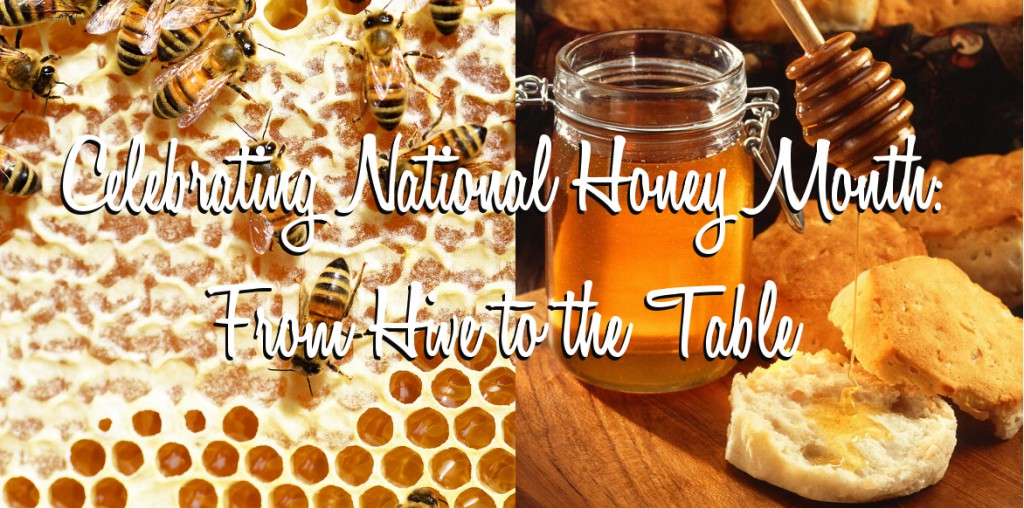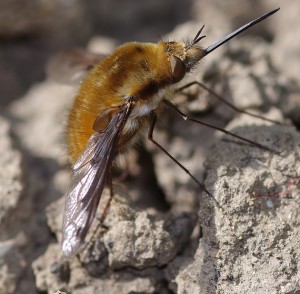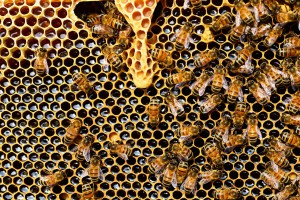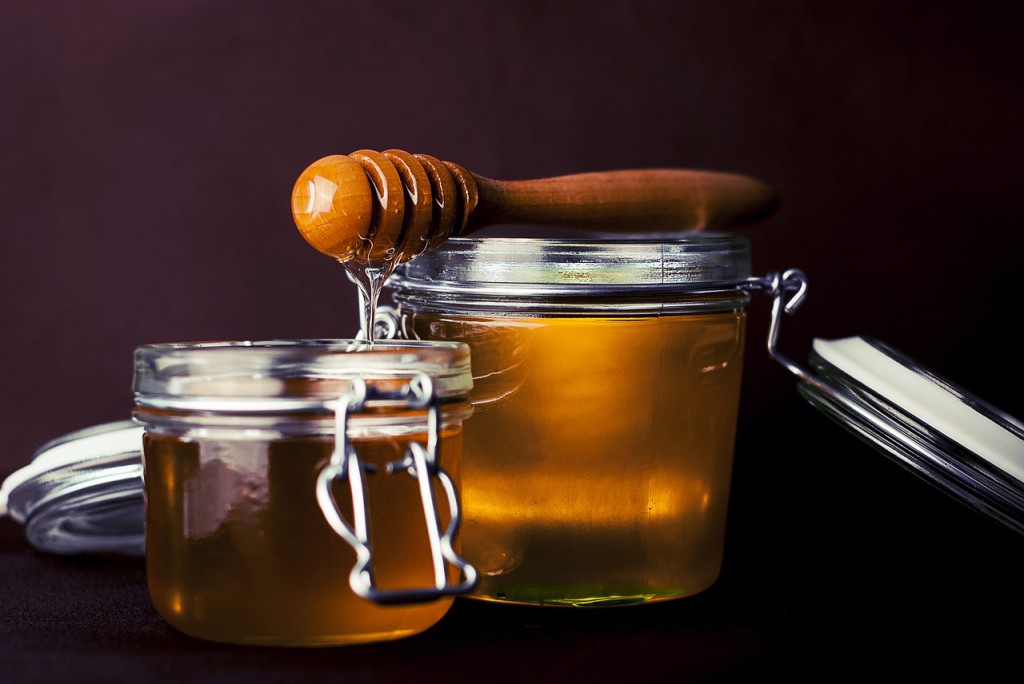The journey of honey from the bee hive to your kitchen table starts with the honey bee. There is a total of around 20,000 separate species of bees in the world but only about 7 of those are different types of honey bees.
Honey bees collect pollen and nectar from blooming flowers and plants. These honey bees that collect pollen and nectar are called worker bees. Worker bees are exclusively all females. Worker bees are able to reach the nectar that is in the flower by using their tongue, also known as a proboscis (pro·bos·cis). The bees’ tongue works like a straw, she unrolls her tongue and dips it into a flower. She then sucks up the nectar like you would when drinking from a straw.
A worker bee drinks the liquid nectar and stores it in a special stomach called the honey stomach. The bee continues to forage, visiting hundreds of flowers, until its honey stomach is full. Within the honey stomach, enzymes break down the complex sugars of the nectar into simpler sugars. With a full honey stomach, the worker bee heads back to the hive and regurgitates the already modified nectar to a hive bee. The hive bee ingests the nectar and further breaks down the sugars. It then regurgitates the nectar into a cell of the honeycomb.
So how does the beekeeper know when the honey is ready for harvest? The beekeeper will look for a few signals in the hive to let him know if the honey is ready. The first signal is if there are open combs (not capped with beeswax) with nectar leaking out. If all the frames in the beehive are all filled with capped honey, the beekeeper can then uncap the combs and start to harvest. Another good way to tell if the honey in your hive is ready to harvest is the season. Usually once the last major nectar flow of the season is complete, your hive’s honey will be ready!
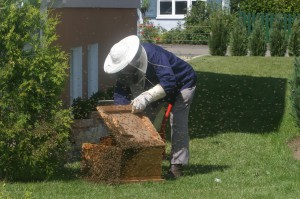
So what happens after your beehive is full of honey and ready to be harvested? Well a beekeeper will remove the frames from the beehive box – called a super – and uses a heated knife or scraper to shave off the waxed caps sealing the honeycomb. He places the frames, heavy and oozing with honey, into a hand-cranked centrifuge and spins them, forcing the honey onto the walls of the drum, where it drips to the bottom. As the drum fills, the beekeeper will open a spigot and strain the honey through cheesecloth to remove stray bits of wax or other debris. Then it gets bottled in sanitized canning jars. According to urban beekeeper, Don Eidam of the San Francisco Bay Area, says that
“Harvests vary from year to year and colony to colony, but a typical hive of 60,000 bees will produce, on average, 40 to 60 pounds of honey.”
Once your honey is bottled it can last for years without any sort of refrigeration. It naturally resists molds, bacteria, and other fungi’s that commonly spoil other foods.
So the next time you buy a jar of honey from your local farmer’s market, just think about all the work that went into making that sweet delicious treat! From the bees bringing the nectar into the hive and processing the nectar into honey. To a beekeeper processing the honey from the honeycomb. Then straining out any beeswax or impurities and then the bottling process. There is a lot of work involved to bring that sweet golden honey all the way to your own kitchen table!
Bonus Honey Facts:
- Honey is the only food product created by an insect that humans eat.
- There is a 15,000 year old cave painting in Spain which depicts a human figure robbing honey out of a beehive.
- There were 2,000 year old vats of sealed honey found in King Tut’s tomb. The honey is believed to be still edible.
- Male bees are called “Drones” and they do not have stingers, their only purpose is to mate with the queen bee.
- The average honey bee’s wings flap over 183 times per second.
- Bees have an excellent sense of smell which allows them to find their hive.
Sources:
http://www.sfgate.com/homeandgarden/article/Honey-harvest-From-hive-to-table-3180156.php
http://www.dummies.com/how-to/content/how-to-know-when-to-harvest-honey-from-your-beehiv.html
http://www.honeybeesuite.com/tag/honey-stomach/
http://www.keeping-honey-bees.com/how-do-bees-make-honey.html
http://www.benefits-of-honey.com/how-do-bees-make-honey.html

